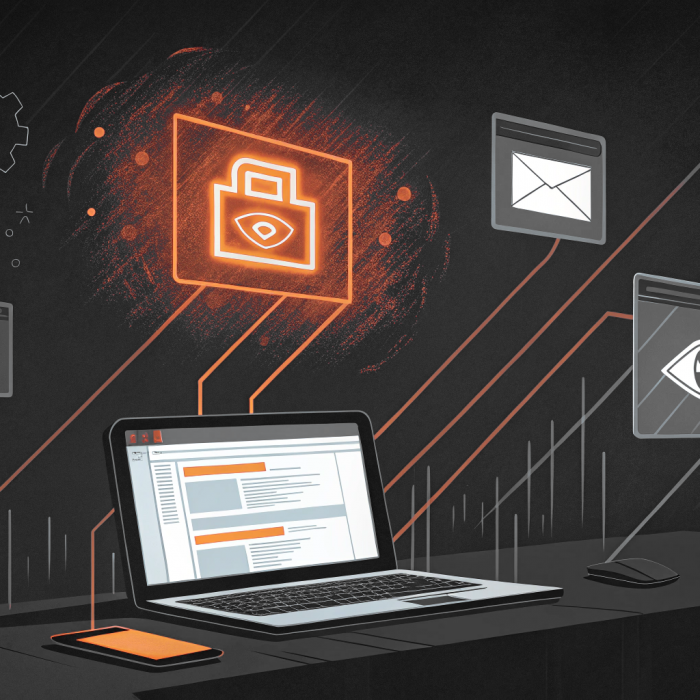Small business owners love to think they’re flying under the radar. After all, why would hackers bother with a 50-person company when they could target massive corporations?
This thinking is everywhere, and it’s completely wrong.
The reality is that cybercriminals absolutely love targeting SMBs. They’re easier to break into, less likely to have proper security measures, and often just as profitable as bigger targets.
Headlines Don’t Tell the Whole Story
When cyberattacks make the news, they’re usually the big ones. Equifax losing data on 147 million people. Target’s payment systems getting compromised. Colonial Pipeline shutting down fuel supplies across the East Coast.
These headline-grabbing breaches create a false impression that hackers only go after Fortune 500 companies, simply because those are the stories that get coverage. When a local restaurant gets hit with ransomware or a regional manufacturer loses customer data, nobody hears about it. But it’s happening constantly.
Small businesses actually get targeted three times more often than large companies. If you work at a small business, you’re 350% more likely to face social engineering attacks than someone at a big enterprise.

What Makes Small Businesses So Attractive
From a criminal’s perspective, small businesses hit the sweet spot of valuable targets with weak defenses. Most can’t afford dedicated security teams or million-dollar cybersecurity budgets. They’re running on basic antivirus software and hoping for the best.
They still have plenty worth stealing though. Customer payment information, employee social security numbers, business financial data, proprietary information. This stuff is just as valuable on the dark web whether it comes from a Fortune 500 company or a local accounting firm.
There’s also the volume play. Instead of spending months trying to crack one heavily defended target, criminals can hit dozens of smaller businesses with automated attacks. Even if only a fraction pay up, it’s still profitable.
Plus, small businesses are often connected to bigger companies as suppliers, vendors, or partners. Getting into a small business can provide backdoor access to much larger, more valuable targets.
The Real Cost When Attacks Succeed
The financial impact can be devastating. Cyberattacks cost SMBs more than $250,000 on average and up to $7 million on the high end. For most small businesses, that’s enough to wipe out years of profits, force massive layoffs, or shut down operations entirely.
Beyond the immediate costs, there’s the damage to customer trust, potential regulatory fines, and the time spent dealing with the aftermath instead of running your business. Some companies never fully recover their reputation after a breach becomes public.
How They’re Getting In
Understanding the most common attack methods can help you spot potential vulnerabilities:
- Ransomware attacks: Criminals target smaller companies because they’re more likely to pay. With limited IT resources and often inadequate backups, paying the ransom sometimes feels like the only option.
- Social engineering: CEOs and CFOs at smaller companies are twice as likely to have their accounts compromised. Executive assistants are frequent targets since they often have access to executive accounts.
- Remote access exploitation: Unsecured remote desktop connections have become a favorite entry point as more people work from home.
- Credential stuffing: Using stolen username/password combinations from other breaches, counting on password reuse across services.

Better Security Doesn’t Have to Be Complicated
The good news is that small and medium businesses can dramatically reduce their attack surface even without massive IT budgets. A few targeted security measures can eliminate the most common vulnerabilities that cybercriminals exploit:
- Remove unnecessary admin privileges – One of the biggest risks is employees having permanent administrative rights on their computers. When someone with admin access accidentally runs malware, that malware gets the same elevated permissions. This is how a single phishing email can lead to a full network compromise.
- Secure remote access properly – If you have remote workers or need to access systems from outside the office, traditional VPN and remote desktop setups create persistent connections that attackers love to exploit. Moving to solutions that provide secure, temporary access only when needed eliminates these always-on entry points.
- Implement proper backup and recovery procedures – Many ransomware victims pay up simply because they don’t have reliable backups. Regular, tested backups stored offline can turn a potential business-ending attack into a minor inconvenience.
- Train employees on social engineering – Since CEOs and executives are twice as likely to be targeted, security awareness training should focus on the social engineering tactics used against leadership teams and assistants with access to sensitive accounts.
- Keep software updated and patched – Attackers frequently exploit known vulnerabilities in outdated software. Establishing automatic updates for operating systems and critical applications closes many common attack vectors.
What’s Next
Most business owners didn’t start their companies to become cybersecurity experts. You’ve got customers to serve, employees to manage, and a business to grow. But ignoring cybersecurity isn’t an option when attackers are actively looking for companies just like yours.
The reality is that basic security hygiene can prevent or greatly limit most of the attacks that destroy small and medium businesses. You don’t need to solve every possible threat, just the common ones that matter most.







